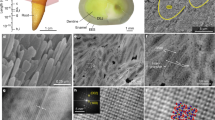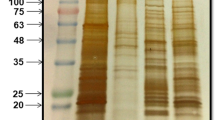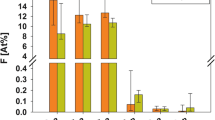Abstract
NORMAL mammalian tooth enamel is highly calcified, containing 97 per cent mineral and 3 per cent organic material and water. The mineral is hydroxyapatite, Ca10(PO4)6(OH)2, and it is associated with a protein constituent of the keratin type1. From histological studies it is well known that normal enamel is made up of structural units which are prismatic in shape and contain mainly crystallites of hydroxyapatite. The organic constituent is concentrated at the margins of these prisms but it is also present in smaller amounts within them. In the prisms the crystallites are highly oriented, with their optic (fibre) axes approximately parallel with the longitudinal axes of the prisms. This submicroscopic structure of normal enamel is shown diagrammatically in Fig. 1. The fully formed enamel can be broken down either in vitro by organic acids such as lactic acid, or in vivo by the processes concerned in carious decay. In each case the mineral is gradually dissolved out until, eventually, the structure of the enamel is destroyed2.
This is a preview of subscription content, access via your institution
Access options
Subscribe to this journal
Receive 51 print issues and online access
$199.00 per year
only $3.90 per issue
Buy this article
- Purchase on Springer Link
- Instant access to full article PDF
Prices may be subject to local taxes which are calculated during checkout
Similar content being viewed by others
References
Hartles, R. L., Chem. Soc. Ann. Rep., 66, 322 (1960).
Darling, A. I., Brit. Dent. J., 101, 289 (1956).
Wiener, O., Abh. sachs. Ges. Wiss., 32, 6 (1912).
Harders-Steinhauser, M., Kolloid Z., 83, 86 (1938).
Darling, A. I., Brit. Dent. J., 105, 119 (1958).
Barrer, R. M., Chem. Soc. Quart. Rev., 3, 293 (1949).
Darling, A. I., Mortimer, K. V., Poole, D. F. G., and Ollis, W. D., Arch. Oral Biol. (in the press).
Author information
Authors and Affiliations
Rights and permissions
About this article
Cite this article
POOLE, D., MORTIMER, K., DARLING, A. et al. Molecular Sieve Behaviour of Dental Enamel. Nature 189, 998–1000 (1961). https://doi.org/10.1038/189998a0
Issue Date:
DOI: https://doi.org/10.1038/189998a0
This article is cited by
-
Comparison of remineralization effects in young and in adult dental tissues
Calcified Tissue Research (1968)
-
Surface Phenomena in Dental Caries
Nature (1967)
-
Dental Caries and Enamel Structure
Nature (1966)
Comments
By submitting a comment you agree to abide by our Terms and Community Guidelines. If you find something abusive or that does not comply with our terms or guidelines please flag it as inappropriate.



